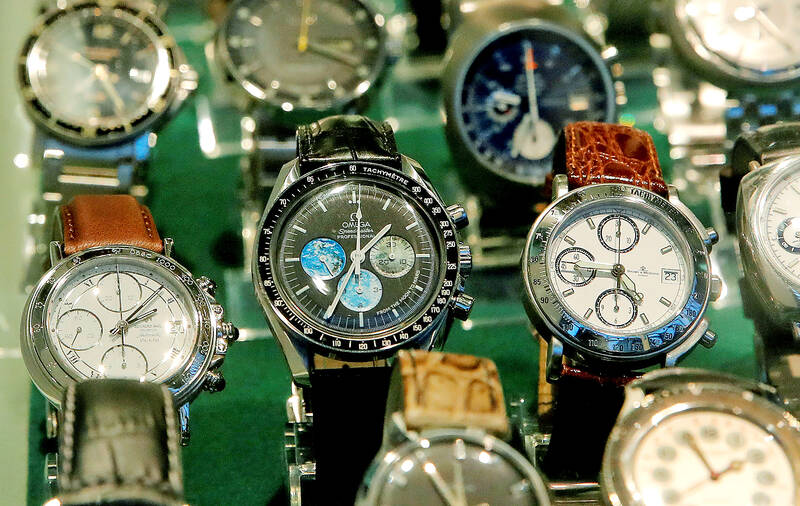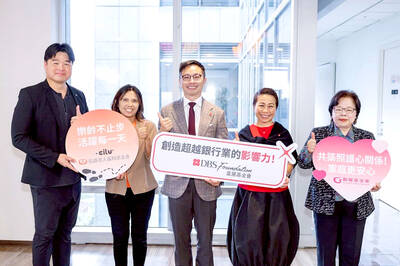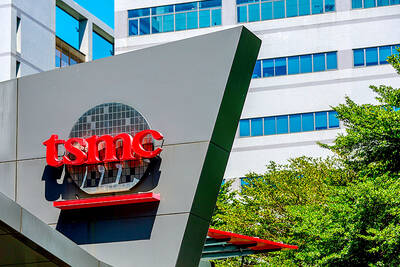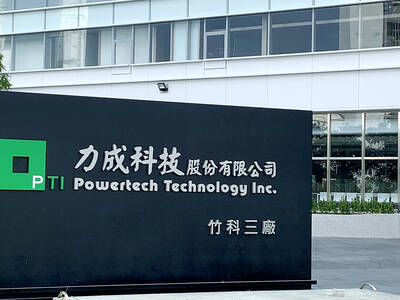Swiss watchmaker Omega SA said that three former employees were involved in a criminal plot that resulted in the sale of a faked Speedmaster at auction for more than US$3 million.
The timepiece, an Omega Speedmaster with “broad arrow” hands from 1957, was a “Frankenstein” watch, composed of an amalgam of mostly authentic parts from other vintage watches, the Biel, Switzerland-based company said in a statement in response to questions from Bloomberg.
The timepiece sold for just more than 3.1 million Swiss francs (US$3.42 million) through auctioneer Phillips in November 2021, the highest price paid for a Speedmaster at auction.

Photo: Reuters
The watch was purchased by Omega, the company said.
The scandal underscores concerns that forgers are creating fakes or altering some vintage watches sold on the secondary market and at auction to achieve higher sale prices. Collectors will pay millions for certain watches in good condition with original parts.
A former employee of the Omega Museum and its brand heritage department was among the staffers alleged to have participated, Omega said.
That former employee “worked in tandem with intermediaries to purchase the watch for the Omega Museum,” arguing to company executives that it “was a rare and exceptional timepiece that would be an absolute must” for Omega’s collection, the company said.
However, the watch was a sophisticated forgery, melding components from various timepieces as well as potentially fabricated parts, Omega said, adding that the former employees might have been involved in its assembly.
Omega did not identify the former employees it said participated in the scheme.
“Its false legacy allowed the profiteers to justify a highly inflated bid made through the intermediaries,” the watchmaker said.
The scheme was “to the massive detriment of Omega,” chief executive officer Raynald Aeschlimann told Swiss newspaper Neue Zurcher Zeitung, which first reported on the case and the accusations against the former employees.
An Omega spokesperson said the company does not yet know who brought the watch to Phillips to sell at auction.
A spokesperson for the auction house said it has not disclosed the identity of the seller due to client confidentiality rules, but would do so if asked by authorities such as the police or courts.
When Phillips consigned the watch and went to Omega for information from its archives, “we were not aware of the alleged criminal activity that is now the subject of an investigation,” the spokesperson added.
The auction house obtained confirmation from Omega of the date of manufacture of the numbered movement, its serial number, the model of the watch that the movement was fitted to and the date it was sold, its spokesperson said, adding that Phillips understands that representatives of Omega saw the watch before they purchased it.
Phillips said it is committed to the “highest standards and due diligence levels in the watch market,” and that the item in question had been viewed by collectors, academics and experts, and traveled to London, Singapore, Hong Kong and New York before it was auctioned in Geneva.
“If, having reviewed the evidence, we think there are grounds for criminal prosecution, then we will have no hesitation in referring the matter to the authorities to prosecute,” the spokesperson said.

The DBS Foundation yesterday announced the launch of two flagship programs, “Silver Motion” and “Happier Caregiver, Healthier Seniors,” in partnership with CCILU Ltd, Hondao Senior Citizens’ Welfare Foundation and the Garden of Hope Foundation to help Taiwan face the challenges of a rapidly aging population. The foundation said it would invest S$4.91 million (US$3.8 million) over three years to foster inclusion and resilience in an aging society. “Aging may bring challenges, but it also brings opportunities. With many Asian markets rapidly becoming super-aged, the DBS Foundation is working with a regional ecosystem of like-minded partners across the private, public and people sectors

Taiwan Semiconductor Manufacturing Co (TSMC, 台積電) has secured three construction permits for its plan to build a state-of-the-art A14 wafer fab in Taichung, and is likely to start construction soon, the Central Taiwan Science Park Bureau said yesterday. Speaking with CNA, Wang Chun-chieh (王俊傑), deputy director general of the science park bureau, said the world’s largest contract chipmaker has received three construction permits — one to build a fab to roll out sophisticated chips, another to build a central utility plant to provide water and electricity for the facility and the other to build three office buildings. With the three permits, TSMC

BREAKTHROUGH TECH: Powertech expects its fan-out PLP system to become mainstream, saying it can offer three-times greater production throughput Chip packaging service provider Powertech Technology Inc (力成科技) plans to more than double its capital expenditures next year to more than NT$40 billion (US$1.31 billion) as demand for its new panel-level packaging (PLP) technology, primarily used in chips for artificial intelligence (AI) applications, has greatly exceeded what it can supply. A significant portion of the budget, about US$1 billion, would be earmarked for fan-out PLP technology, Powertech told investors yesterday. Its heavy investment in fan-out PLP technology over the past 10 years is expected to bear fruit in 2027 after the technology enters volume production, it said, adding that the tech would

RUN IT BACK: A succesful first project working with hyperscalers to design chips encouraged MediaTek to start a second project, aiming to hit stride in 2028 MediaTek Inc (聯發科), the world’s biggest smartphone chip supplier, yesterday said it is engaging a second hyperscaler to help design artificial intelligence (AI) accelerators used in data centers following a similar project expected to generate revenue streams soon. The first AI accelerator project is to bring in US$1 billion revenue next year and several billion US dollars more in 2027, MediaTek chief executive officer Rick Tsai (蔡力行) told a virtual investor conference yesterday. The second AI accelerator project is expected to contribute to revenue beginning in 2028, Tsai said. MediaTek yesterday raised its revenue forecast for the global AI accelerator used